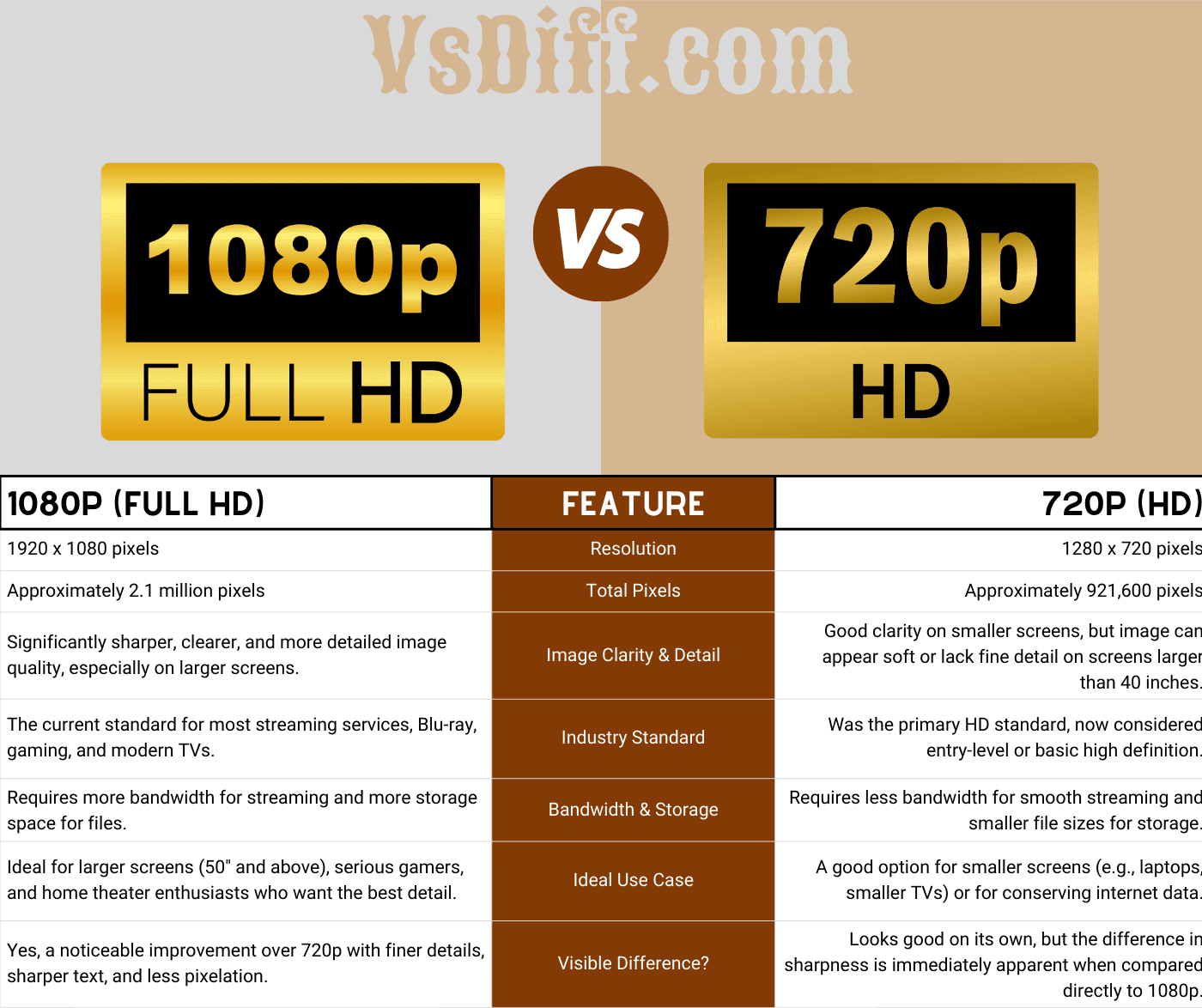1080p vs 720p Comparison Table
| 1080p (Full HD) | Feature | 720p (HD) |
|---|---|---|
| 1920 x 1080 pixels | Resolution | 1280 x 720 pixels |
| ~2.1 million pixels | Total Pixels | ~921,600 pixels |
| Sharper, clearer, and more detailed images on large screens. | Image Quality | Good on smaller screens, but softer on TVs over 40 inches. |
| Current standard for streaming, Blu-ray, gaming, and modern TVs. | Industry Standard | Former HD standard, now considered entry-level. |
| Needs more bandwidth and storage. | Bandwidth & Storage | Less bandwidth and smaller file sizes. |
| Best for big screens (50″+), gaming, and home theaters. | Best Use | Good for laptops, smaller TVs, or saving data. |
| Noticeably sharper than 720p, less pixelation. | Visible Difference | Looks fine alone, but softer next to 1080p. |
What Is the Difference Between 1080p and 720p?
The main difference between 1080p and 720p lies in resolution, image clarity, pixel density, and ideal usage scenarios.
- 1080p (Full HD) delivers sharper and more detailed visuals, especially noticeable on larger screens.
- 720p (HD) requires less bandwidth and storage, making it suitable for smaller screens or limited internet speeds.
👉 Watch the video explanation here:
Which Should You Choose: 1080p or 720p?
If you value sharpness, detail, and watch on large screens, go with 1080p Full HD.
If you have a smaller screen or limited internet bandwidth, 720p HD is still a decent choice.
Frequently Asked Questions (FAQ)
Is 1080p better than 720p?
Yes, 1080p offers higher resolution, sharper images, and more detail, especially on larger screens.
Do I need 1080p for a small screen?
Not necessarily. On smaller screens like laptops or tablets, 720p is sufficient and uses less bandwidth.
Which is better for streaming?
1080p provides a superior viewing experience, but 720p can help reduce buffering if internet speed is limited.
